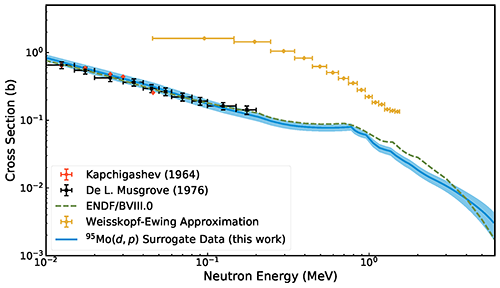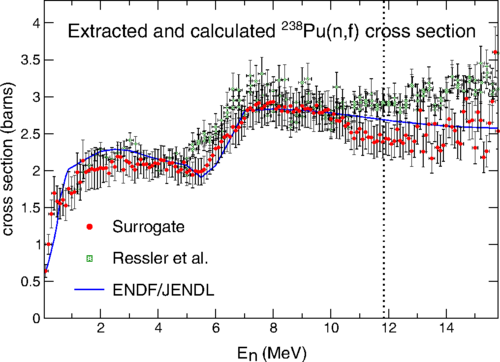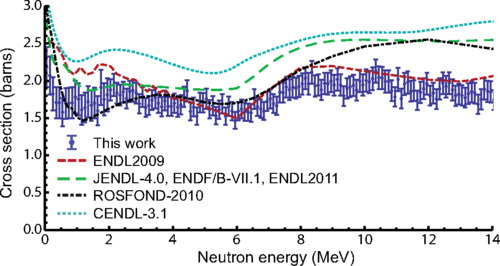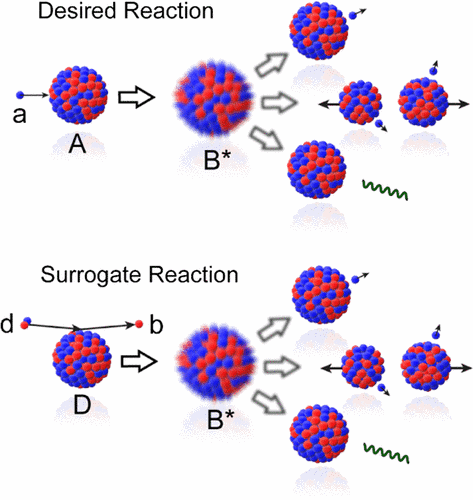Theoretical and experimental physicists at LLNL collaborate to develop new approaches for studying nuclear reactions key to stockpile stewardship and the production of elements in the cosmos.
Neutron-induced reactions touch every aspect of modern life. They drive the nuclear power plants that light our homes and create many of the radioactive isotopes used for nuclear medicine. They are of interest to stockpile stewardship, which ensures the safety, security, and reliability of the nation’s nuclear deterrent without relying on testing nuclear weapons. Understanding these reactions can help answer questions about the origins of the elements around us.
As important as these reactions are, they are extremely difficult, or in many cases impossible, to measure directly because many nuclei that participate in these reactions are radioactive. The importance of these reactions necessitates the development of techniques to measure them indirectly. To this end, we collaborated with theoretical physicists at LLNL to develop the Surrogate Reactions Method (SRM), an indirect technique for constraining the properties of neutron-induced reactions.
In the SRM, a projectile and target form the same compound nucleus (a statistical object that lives long enough for the energy with which it is formed to be distributed over its constituent nucleons) as would be formed in the desired—in this case neutron-induced—reaction. The formation and decay of this compound nucleus are measured, and the measurements are used to constrain parameters used to calculate the properties of the desired reaction.
Featured results
We have used the SRM to constrain the properties of neutron-induced reactions of interest to applications and fundamental science. When possible, we used stable beams at facilities like the Cyclotron Institute at Texas A&M University and the 88-inch cyclotron at Lawrence Berkeley National Laboratory. Using this method, we have demonstrated:
- Both pick-up (p,d) and stripping (d,p) transfer reactions are effective as (n,g) surrogates.
- The power of using the SRM constrain neutron capture cross sections on radioactive nuclei.
- Other properties of (n,f) reactions, not just cross sections, can be constrained indirectly using the SRM.
With further research, we hope to:
- Develop the formalism necessary to extend the SRM to deformed nuclei.
- Perform SRM measurements in inverse kinematics using fast and reaccelerated radioactive ion beams.
- Benchmark the performance of the SRM for constraining other properties of neutron-induced reactions and exotic nuclei.
- Provide important constraints on the properties of neutron-induced reactions of interest to the slow neutron-capture process (the s process) through which nearly half of the elements heavier than iron are produced.
Featured publications

Towards Neutron Capture on Exotic Nuclei: Demonstrating (d,pγ) as a Surrogate Reaction for (n,γ) | Phys. Rev. Lett., 2019
A. Ratkiewicz, et al

Constraining Neutron Capture Cross Sections for Unstable Nuclei with Surrogate Reaction Data and Theory | Phys. Rev. Lett., 2018
J.E. Escher, et al

236Pu(n,f), 237Pu(n,f), and 238Pu(n,f) cross sections deduced from (p,t), (p,d), and (p,p′) surrogate reactions | Phys. Rev. C, 2014
R.O. Hughes, et al

Measurement of the 240Am(n,f) cross section using the surrogate-ratio method | Phys. Rev. C, 2014
R.J. Casperson, et al

Compound-nuclear reaction cross sections from surrogate measurements | Rev. Mod. Phys., 2012
J.E. Escher, et al




